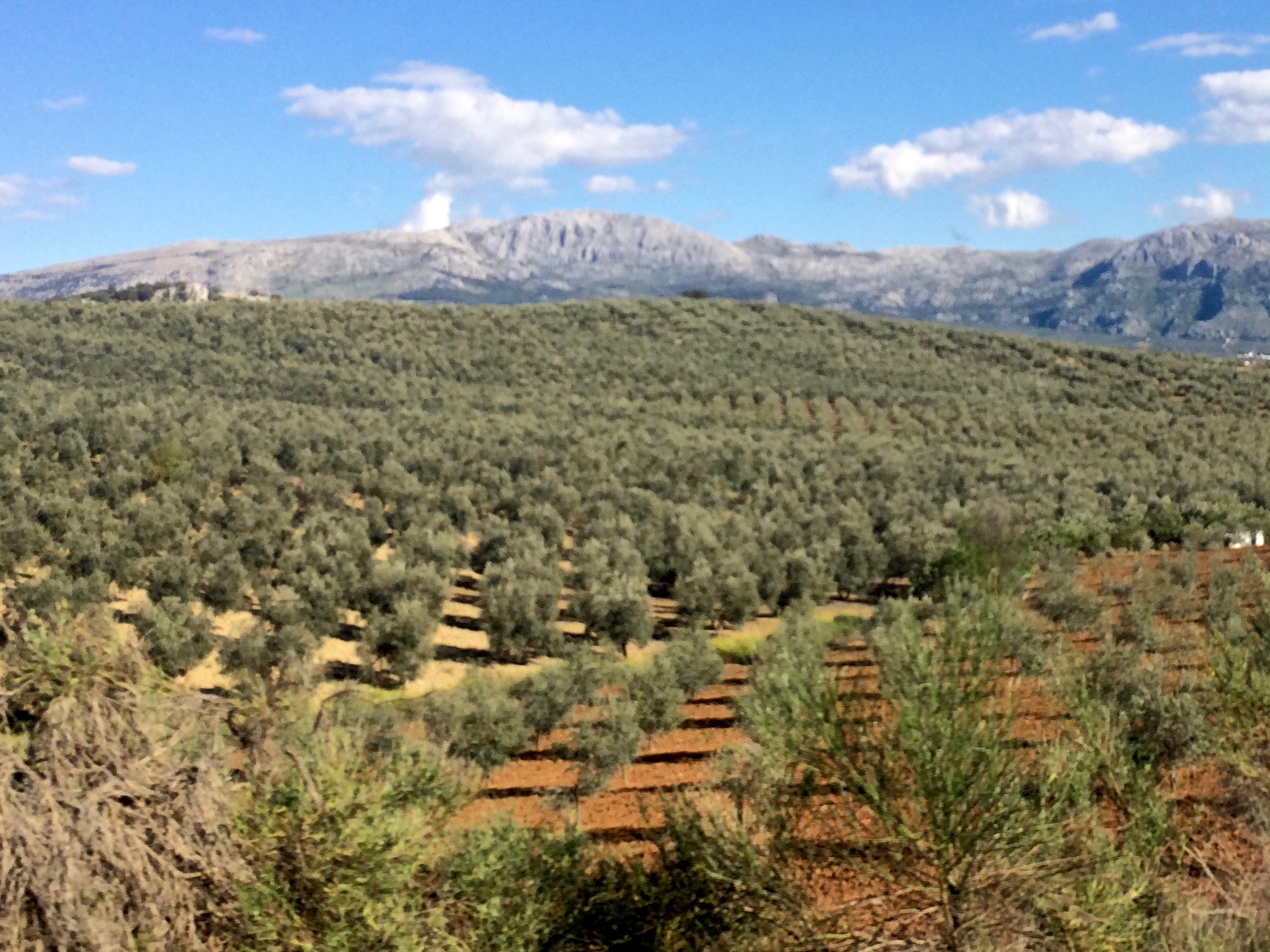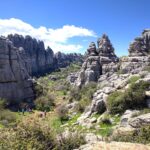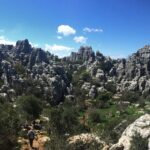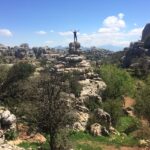After a day in Ronda, we arrived to the city and center of Andalusia of Antequera by nightfall. We thought we would just be spending the night there, but instead, upon discovery of the nearby nature reserve of Torcal de Antequera, we ended up hiking the next day.
Millions of years ago the sea carved out these rock formations, and millions of years later snow, wind, and rain continued to carve the same formations into what we see today, called a karst topography. These rock formations are considered to be some of the most impressive rock formations in Europe, and remind us of formations similar to Canyonlands National Park: Needles in Utah. Unlike parks in the U.S., this park is free and even includes a restaurant, a small visitor center, bathrooms, and overnight parking. Because the trails around the park are short (2.5 and 4.5 km), it is popular with families.
It seems that on weekends the 3.7 km road to the park is closed due to heavy traffic. Visitors must park at the bottom parking lot and walk up the hill or take the bus for €3. €3 to travel 3.7 km? No thanks.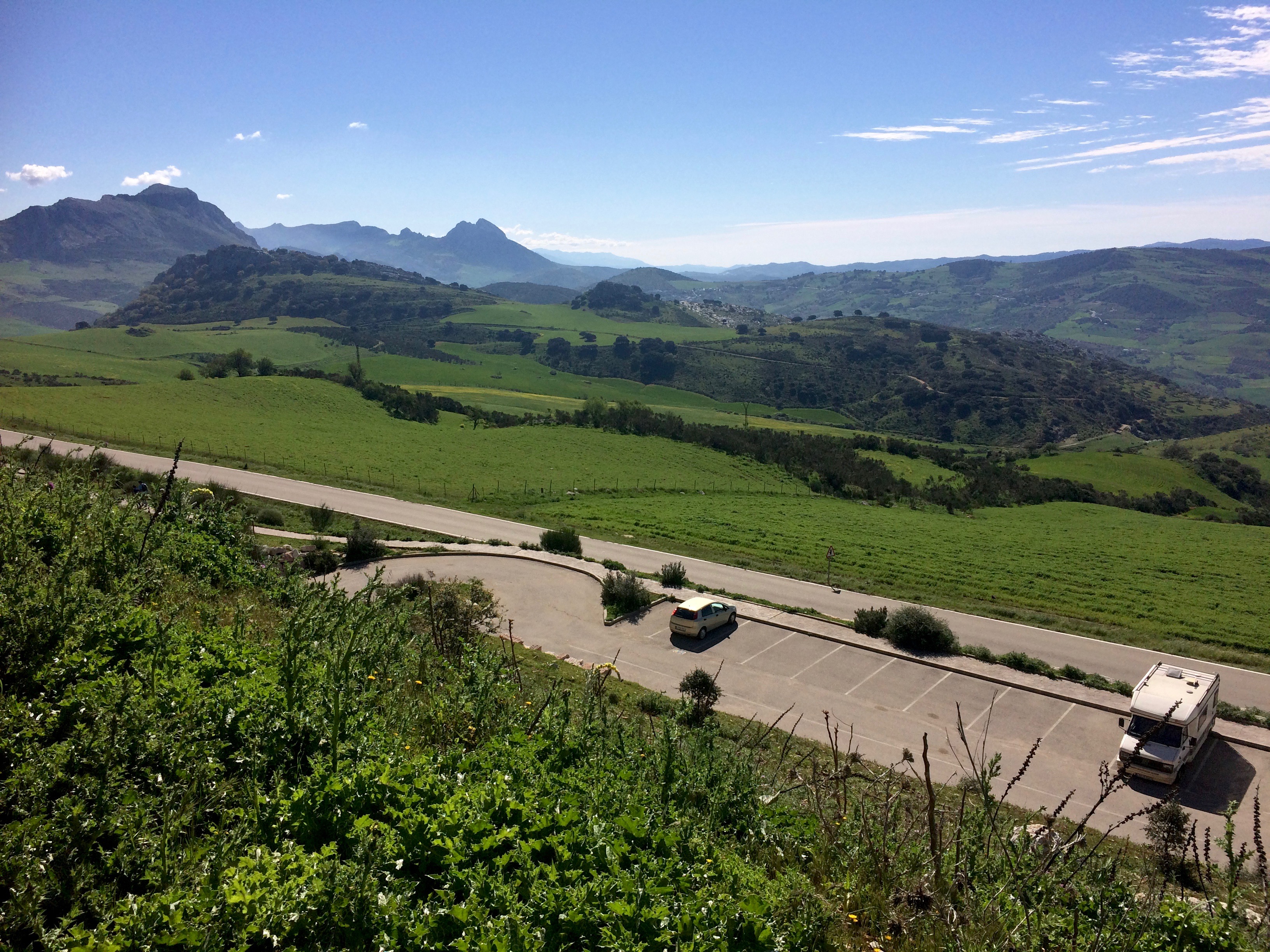
Not far from the visitor center is the Mirador Las Ventanillas: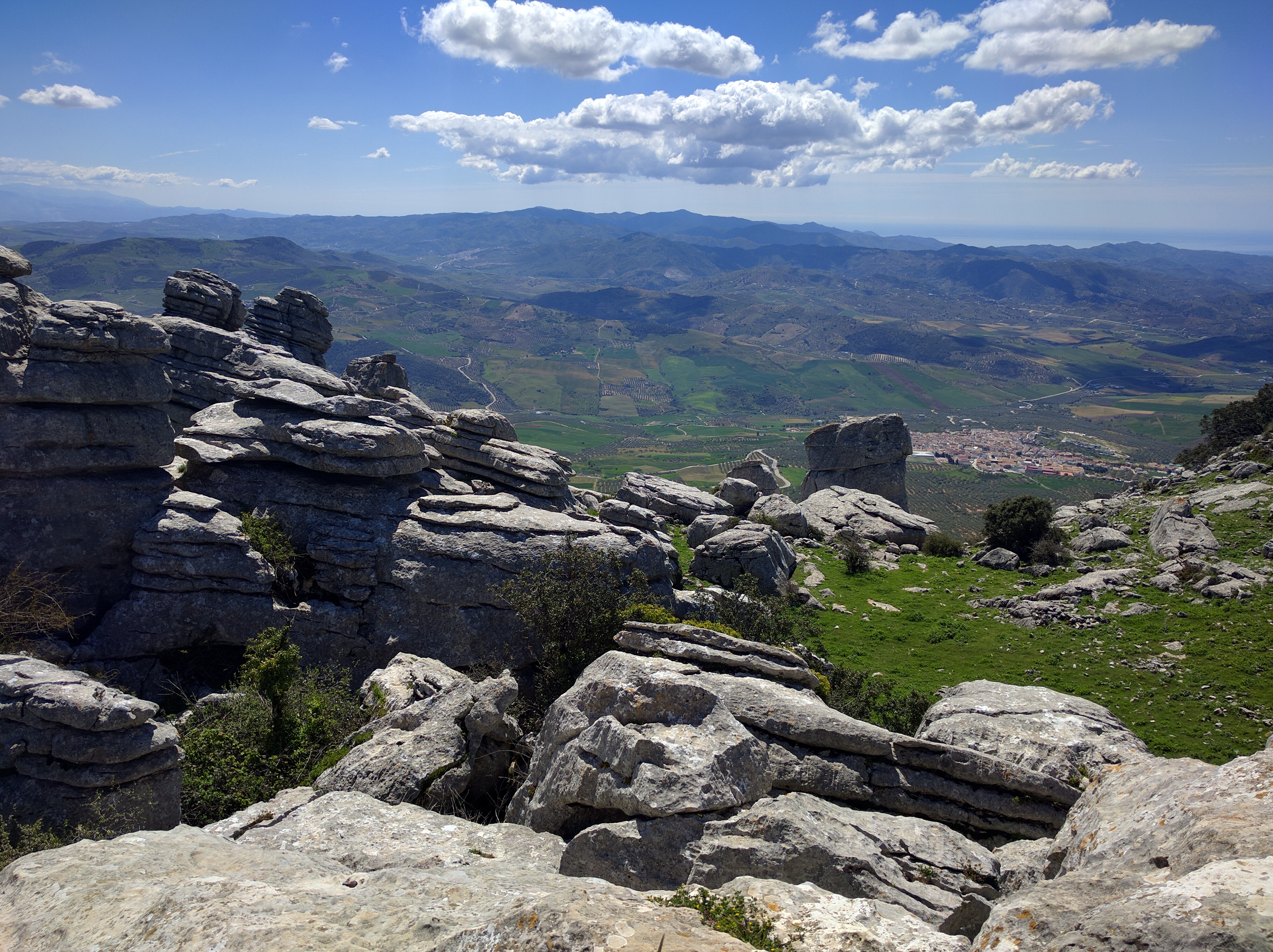
Spectacular scenery from the 4.5 km trail (Ruta Amarilla):
Once the road opened to traffic, we even brought our motorhome up to the park.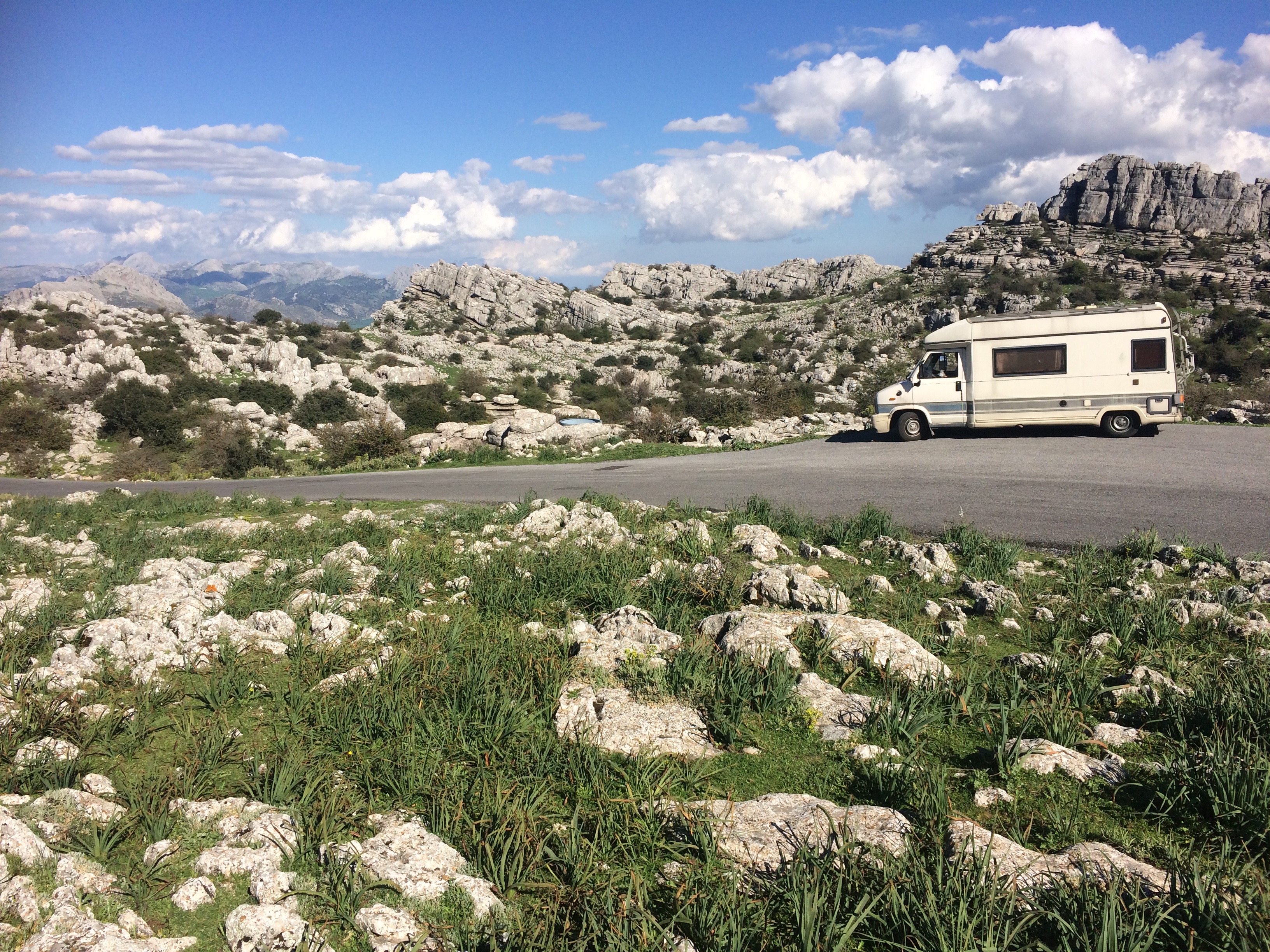
The iconic rock formation of the whole park, Monumento Natural el Tornillo, can be found along a short trail not far from the visitor center. Although it resembles a stack of flat rocks, this is actually a single rock that has been carved out by Mother Nature over millions of years!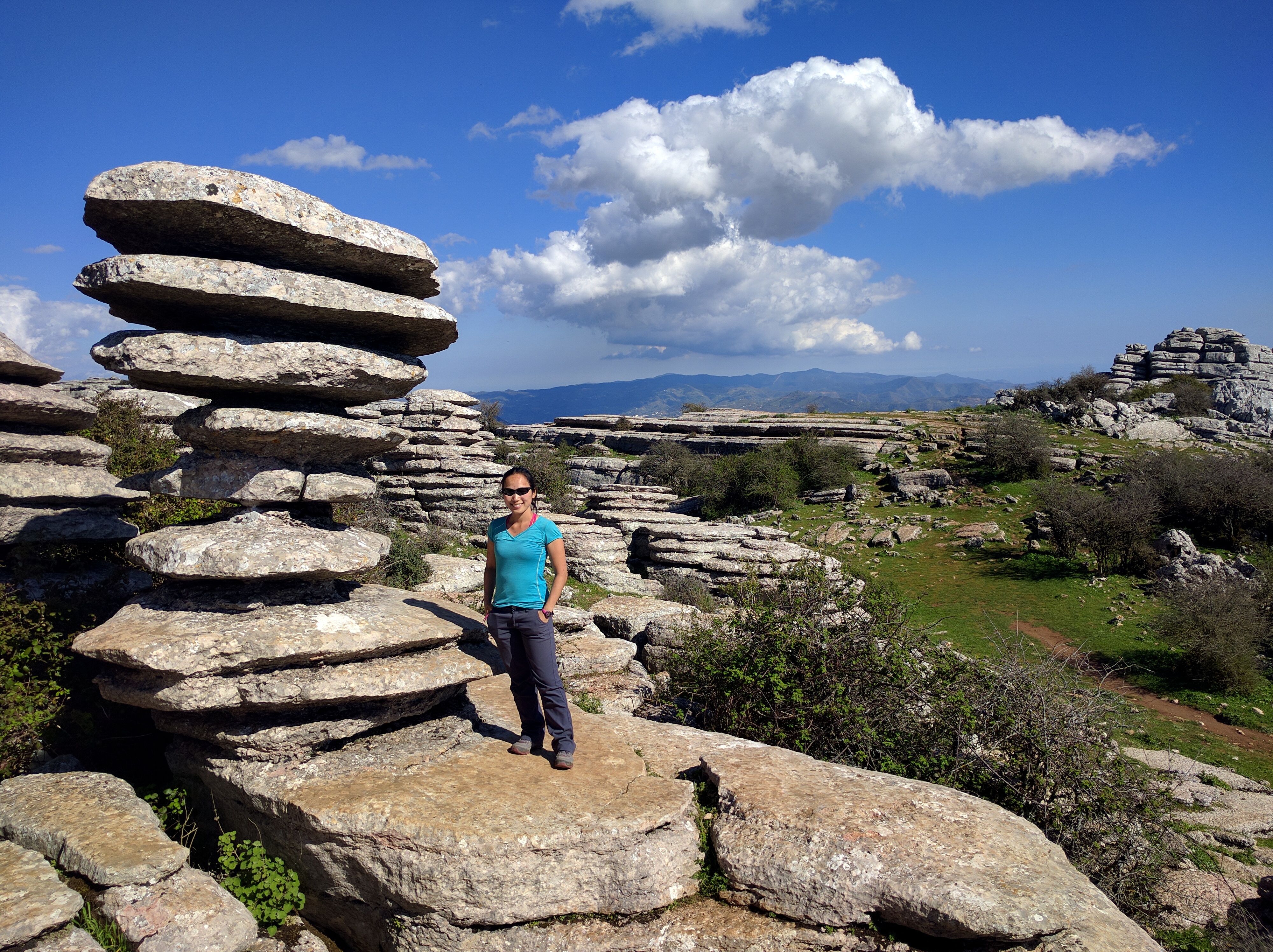
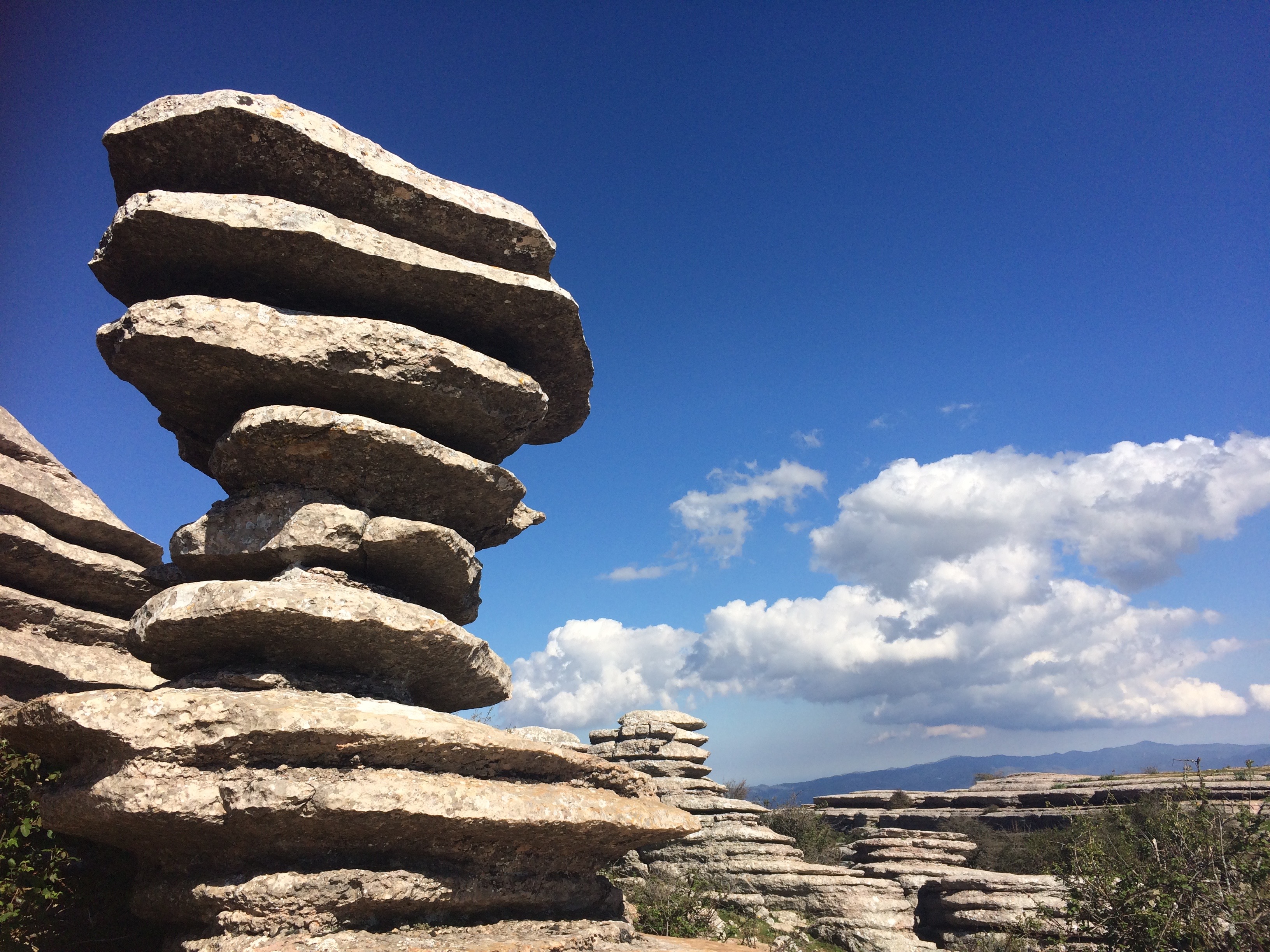
In addition to this wonderful rock park, the entire surroundings of the area are beautiful. Packs of cyclists and motorcyclists hug the roads, making me yearn for my road bike back home. From certain hilltops, Malaga and the Mediterranean peek out from a distance, and up close miles and miles of olive trees zip by in all directions. Spain is the world’s largest producer of olive oil after all, and the entire region surrounding Torcal de Antequera proudly shows it.
